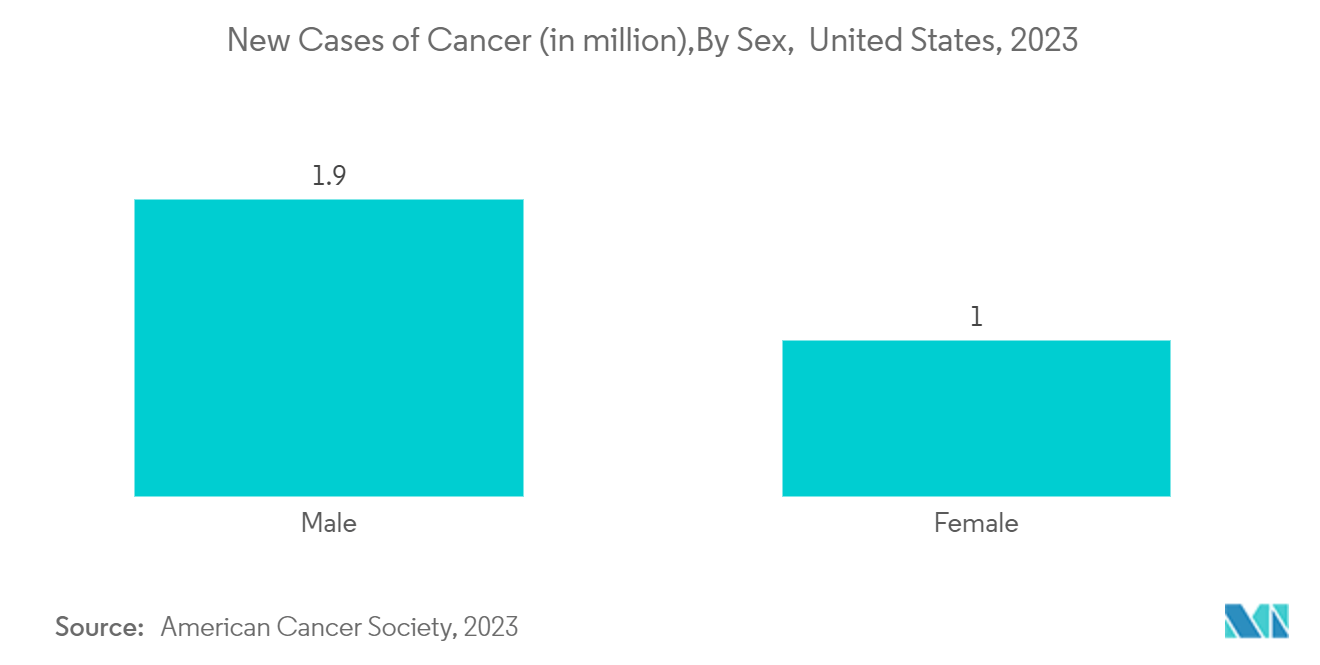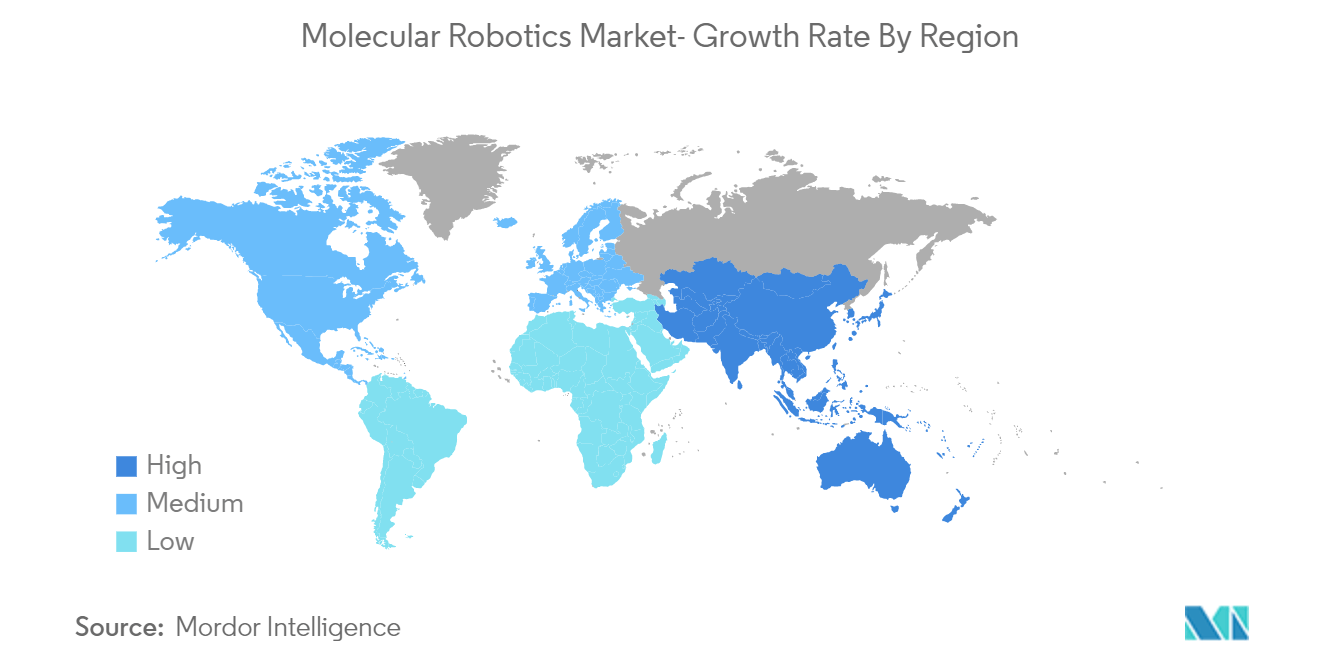Market Trends of Molecular Robotics Industry
Drug Discovery by the Application Segment is Expected to Witness a Healthy Growth Over the Forecast Period
The rapid progress of molecular nanotechnology has opened the door to advanced technologies such as molecular robotics. This technique uses molecules as parts of robots. Drug discovery has gained demand due to the increasing incidence of chronic and rare diseases. Because drug discovery takes time, researchers are now focusing on using molecules as robots and introducing molecular robotics into the drug discovery platform.
According to the study published in Springer Nature's Molecular Robotics in February 2021, advances in DNA nanotechnology are increasing the demand for molecular robots made of biomolecules. The same source also stated that these molecular robots can carry drugs with sophisticated information processing capabilities and can also be used for theranostics (a term used for therapy and diagnosis). This growing R&D in drug discovery and the application of molecular robotics in drug discovery are increasing the demand for molecular robots, which is expected to boost the growth of the studied market in this segment.
The increasing number of experiments, clinical trials, and fundraisers in the field of drug discovery for the application of biomolecular robots is currently increasing the growth of the studied market. For instance, in June 2022, Insilico Medical announced the completion of a USD 60 million Series D fundraising from a syndicate of global investors with experience investing in the biopharmaceutical and life sciences industries. The funding aims to invest in the launch of an AI-powered drug discovery robotics laboratory and construct unique molecular structures with desired features.
Therefore, the increasing activities by the research organizations and the major market players are driving the growth of the drug discovery segment. This is expected to contribute to the studied market's growth over the forecast period.

North America Holds Significant Share in the Market and Expected to Grow in Forecast Period
North America is expected to dominate the molecular robotics market, and the market is expected to grow in the region due to advanced robotics technologies and increased research and developments in the pharmaceutical sector. The prevalence of chronic diseases, such as cancer and other rare diseases, has recently been increasing in North America. In North America, especially in the United States, research and studies are leaning toward finding better and more advanced drug and treatment options.
According to Cancer Facts and Figures 2023, published in January 2023 by the American Cancer Society, an estimated 1.9 million new cancer cases will be diagnosed in 2023, among which prostate cancer is estimated to be among 288,300, followed by 238.340 cases of lung cancer and 300,590 cases of female breast cancer. Furthermore, according to statistics published by the Government of Canada and released in May 2022, about 233,900 Canadians were diagnosed with cancer in 2022, and prostate cancer is expected to remain the most commonly diagnosed cancer. Cancer cases motivate research institutes in the United States to collaborate with research institutes in other North American countries. This collaboration is involved in finding the best cure for cancer. Molecular robots are one of the most studied tools for cancer drug discovery research in the region.
The presence of a high concentration of market players in the North American region and new product launches by these players are also driving the growth of the market in the region. Active participation of universities in drug research and molecular robotics is also supporting the growth of the studied market. For instance, in November 2021, Harvard University's Wyss Institute for Biologically Inspired Engineering, along with the University of Vermont and Tufts University, announced that a team of researchers known to have built the first living robot, the Xenobot, had discovered an entirely new form of biological reproduction of this living robot, which promises numerous opportunities for regenerative medicine development. The advanced research and developments in the region are anticipated to spur the growth of the studied market over the forecast period.


